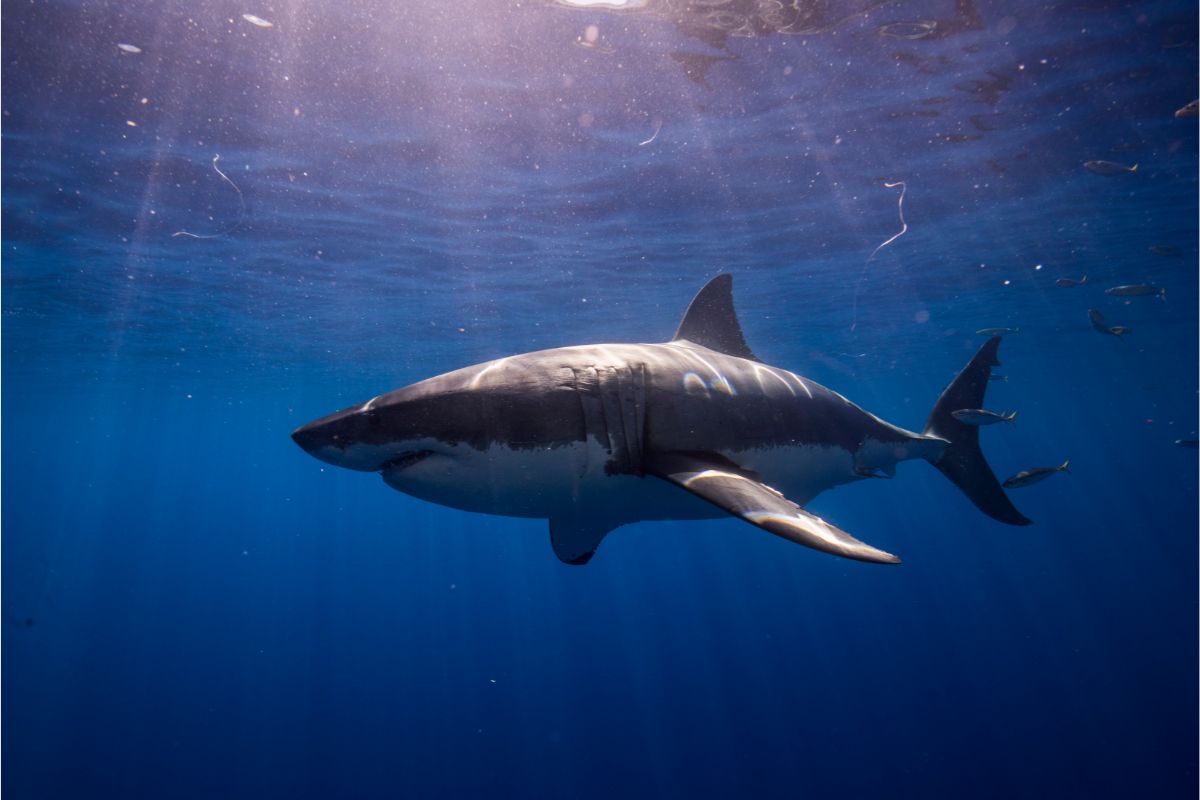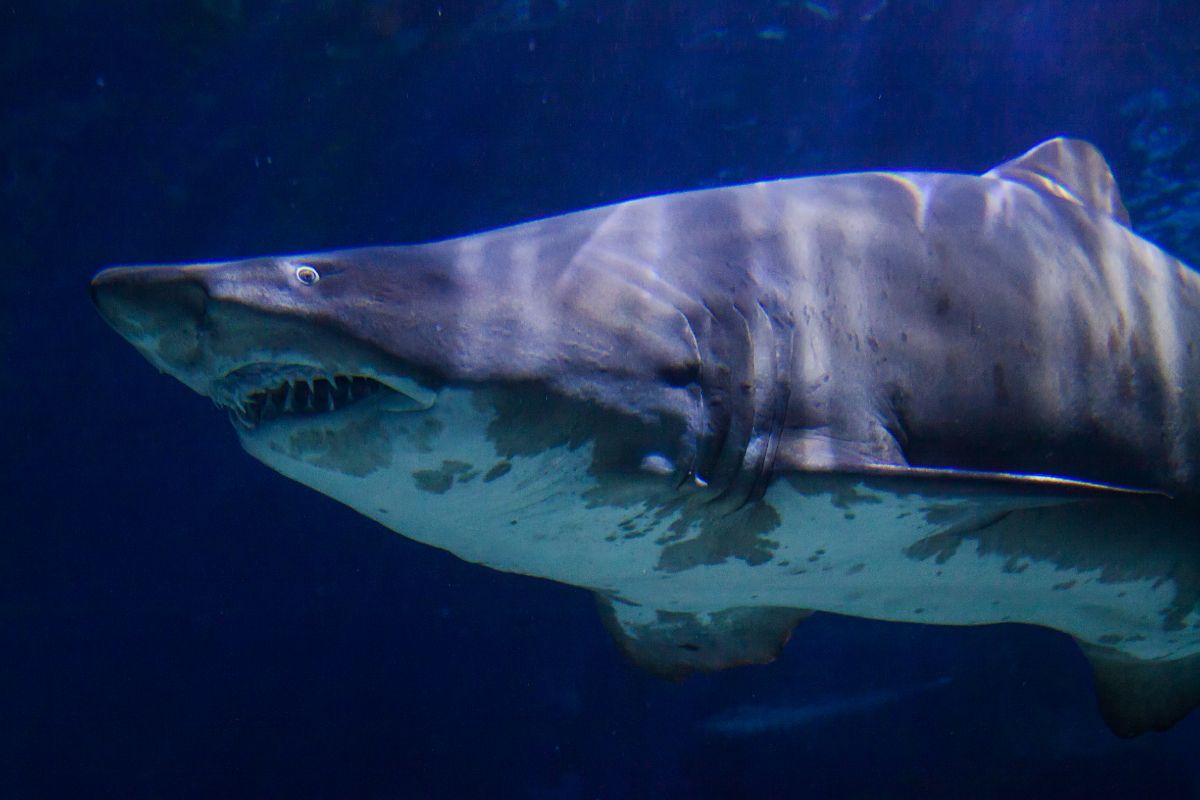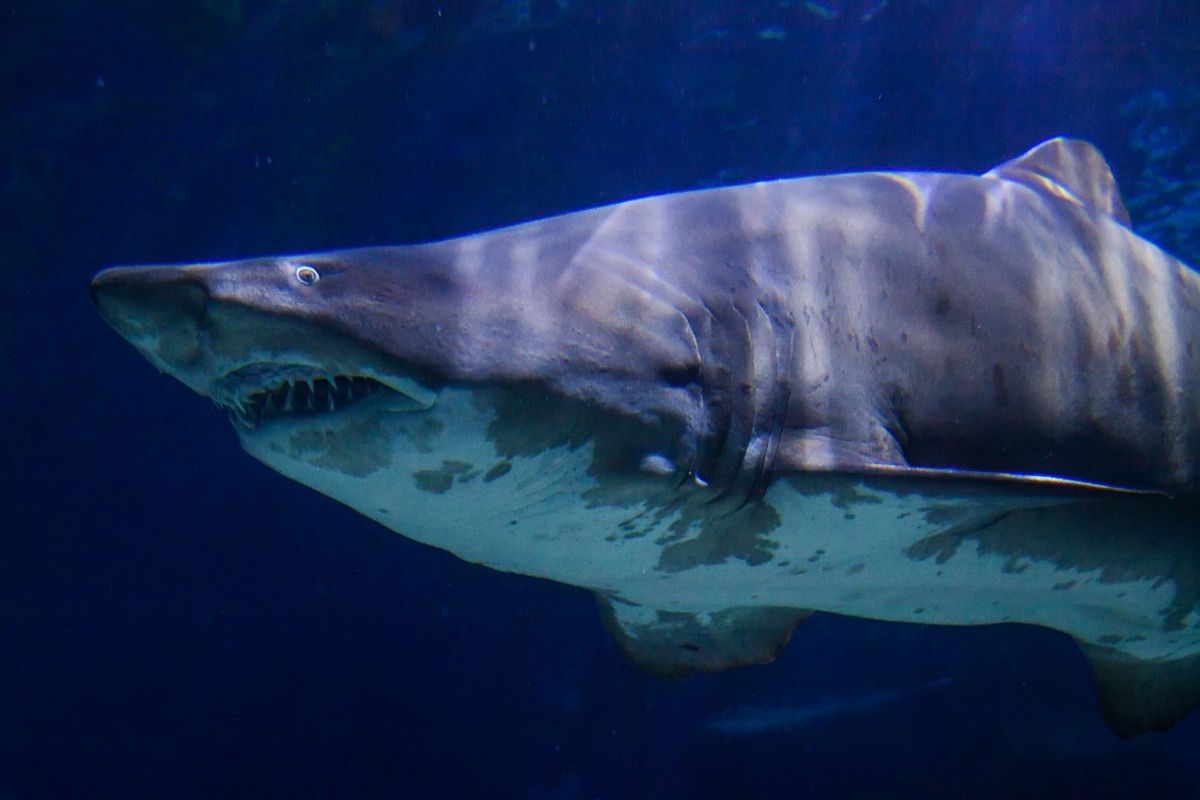The Great White Shark is the largest shark macro-predatory hunting species in the ocean in our times.

Growing as large as 20 feet long in some cases, and weighing as much as 5,000 pounds, it is an huge fish that can predate on pretty much everything, except for the largest species of whales.
However, compared to some of the shark species that have lived in our recent prehistoric past, the great white shark looks almost puny by comparison.
Probably the most famous, and certainly the largest, is the iconic shark Megalodon.
It is such an iconic animal that existed pretty recently to us, in the grand scale and story of evolution.
It was so recent, that the ancestors of humans, upright apes, had already started to evolve, and we were making tools when this colossal creature was prowling the waters of the ocean.
This, along with a lot of speculative surviving animals theories and cryptid pseudoscience, has led many people to believe that there are still Megalodon out there, swimming in the depths of the ocean where they cannot be found by any easy means.
So, is there any truth to these theories? Do we still share the deep water of the Pacific or Atlantic with a lost giant of our recent prehistory? It’s a tantalizing image, that’s for sure!
In this article, we are going to explain what exactly Megalodon was, what made it so special, and whether or not it is still alive today.
What Are Megalodon?
For those of you that have clicked on this article out of curiosity, and don’t know what a Megalodon is, allow us to give a little more context.
Megalodon was a species of mackerel shark, the family that most modern species belong to, including the great white, that lived in pretty much all the oceans of the world except for the northern and southernmost waters around the poles.
The main thing that Megalodon is known for is its colossal size.
Whilst it is generally hard to get accurate measurements for extinct shark species, as they only usually leave teeth and jawbones behind in the fossil records, we can usually extrapolate how big they are based on the size of their jaws.
And Megalodon left some pretty large jaws behind! A full row and jawbone of an adult Megalodon are so big, that a fully grown person can easily step through it.
This means that, if nothing else, Megalodon would have no trouble eating a fully grown adult.
Based on their jaw remains, Paleontologists have estimated that the Megalodon shark could have grown as large as 67 feet long in some cases, and weighed up to 100 tons!
This allowed Megalodon to hunt pretty much any other animal in its environment, from whales to seals, to even turtles, their hard shells offering no protection against a set of jaws that could just eat them whole.
We also know that Megalodon lived for a very long time.
The first fossils of Megalodon appear around 23 million years ago, in an epoch known as the Oligocene, and are found across the following two epochs, the Miocene and the Pliocene.
With the species only disappearing in the fossil record around 3.6 million years ago, that is certainly a long time for a single species to live and thrive!
Is Megalodon Still Alive?
So, with all this information about the Megalodon, its geographical and time range, its size, and its varied diet is there any chance that Megalodon could still be alive today? Is it that unlikely?
Well, unfortunately for us, the answer is no, definitely not.
The fact of the matter is that Megalodon, as far as we can tell at least, tended to stick relatively close to the surface of the water, rarely diving into colder depths, if ever.
The fact is, if there are sharks as large as Megalodon alive today, as we knew them, we would have seen evidence of their more recent survival, and not stop several million years ago.
Why Did It Disappear?

So, why exactly did this apex predator disappear from our waters? Paleontologists have a few theories.
Coming Of The Ice
One of the general principles of ecology and food chains in the wild is that the further up the food chain an animal is, the more vulnerable it is to changes in that complex web of relationships between plants, predators, and prey.
And one of the biggest changes around the late Pliocene period was the growth of the ice sheets, and the dawn of the coming Ice Age.
As the water temperatures of the world changed, seasonal plankton blooms around the poles would have made attractive places for whales to migrate to and feed on.
This meant that more whale species were migrating towards the poles every summer, meaning that, certainly around the equator, Megalodon would have struggled to find enough food around the equator, as it was likely less migratory than many whale species.
Whales becoming more migratory also coincides with a loss of several different whale species around the equator and sub-tropics, meaning that there was likely less food for Megalodon to eat.
Outcompeted By The Greatest
However, there is more than one way that food webs can be disrupted.
Outside simple changes in its environment, competition from new species can also force animals into precariously vulnerable positions.
Several new predatory marine animals appear around the Pliocene and Miocene, such as the giant predatory sperm whale species Livyatan, which directly competed with Megalodon for prey, and were likely too large themselves to be a reliable food source for Megalodon.
Not only that, but the ancestors of the Great White Shark also appear in the late Pliocene, and, whilst not as big, could still hunt larger animals, whilst also being quicker.
Outcompeted, Megalodon went out the way that the Dodo eventually would too.
Final Thoughts
So, it is next to impossible for Megalodon to be alive today.
Outcompeted by faster and smaller species, Megalodon’s iconic size eventually caused its downfall.
Truly, an aquatic David vs. Goliath story for the ages.
- Is It Possible For A Shark To Swim Backwards? - August 2, 2022
- Are Leopard Sharks Dangerous? - August 2, 2022
- What Are The Differences Between Shark And Dolphin Fins? - August 1, 2022








